
Still Waters is a 1949 detective novel by E. C. R. Lorac, the pen name of the British writer Edith Caroline Rivett. It is the thirty second in her long-running series featuring Chief Inspector MacDonald of Scotland Yard, one of the more orthodox detectives of the Golden Age of Detective Fiction.
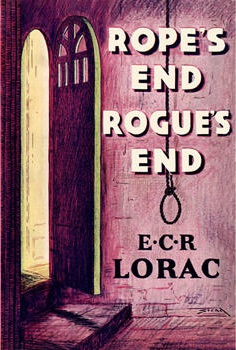
Rope's End, Rogue's End is a 1942 detective novel by E.C.R. Lorac, the pen name of the British writer Edith Caroline Rivett. It is the twenty first in her long-running series featuring Chief Inspector MacDonald of Scotland Yard, a Golden Age detective who relies on standard police procedure to solve his cases. It takes the form of the country house mystery, popular during the era.

Death of an Author is a 1935 detective novel by E.C.R. Lorac, the pen name of the British writer Edith Caroline Rivett. It is a rare standalone book by Lorac, not featuring Chief Inspector MacDonald of Scotland Yard who appeared in a lengthy series of novels during the Golden Age of Detective Fiction. It was her final novel published by Sampson Low before, she switched to the more prestigious Collins Crime Club with whom she remained for the rest of her career.
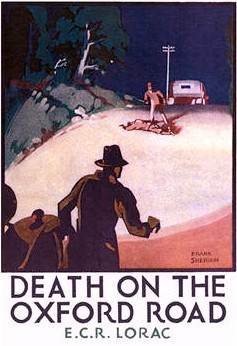
Death on the Oxford Road is a 1933 detective novel by E.C.R. Lorac, the pen name of the British writer Edith Caroline Rivett. It is the fifth book featuring Chief Inspector MacDonald of Scotland Yard who appeared in a lengthy series of novels during the Golden Age of Detective Fiction.

Murder in Chelsea is a 1934 detective novel by E.C.R. Lorac, the pen name of the British writer Edith Caroline Rivett. It is the seventh book featuring Chief Inspector MacDonald of Scotland Yard who appeared in a lengthy series of novels during the Golden Age of Detective Fiction.
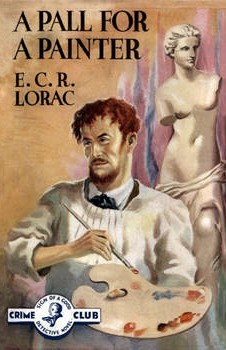
A Pall for a Painter is a 1936 detective novel by E.C.R. Lorac, the pen name of the British writer Edith Caroline Rivett. It is the tenth in her long-running series featuring Chief Inspector MacDonald of Scotland Yard, a Golden Age detective who relies on standard police procedure to solve his cases.

Crime Counter Crime is a 1936 detective novel by E.C.R. Lorac, the pen name of the British writer Edith Caroline Rivett. It is the ninth in her long-running series featuring Chief Inspector MacDonald of Scotland Yard, a Golden Age detective who relies on standard police procedure to solve his cases. It was her first novel published by Collins Crime Club after switching from Sampson Low, partly on the success of the previous entry in the series The Organ Speaks. Collins then published the remainder the series.

The Case of Colonel Marchand is a 1933 detective novel by E.C.R. Lorac, the pen name of the British writer Edith Caroline Rivett. It is the fourth book featuring Chief Inspector MacDonald of Scotland Yard who appeared in a lengthy series of novels during the Golden Age of Detective Fiction.

A Village Afraid is a 1950 detective novel by the British writer Cecil Street, writing under the pen name of Miles Burton. It was part of a lengthy series of books featuring the detective Desmond Merrion and Inspector Arnold of Scotland Yard.

The Lake District Murder is a 1935 detective novel by the British writer John Bude. It is the first in a series of novels featuring Chief Inspector Meredith, promoted at the end of case to Superintendent. Set in the Lake District of Northern England, it shows the influence of Freeman Wills Crofts's Inspector French novels by featuring a detective who methodically breaks down the alibis of his suspects. In 2014 it was reissued by the British Library Publishing as part of a group of republished crime novels from the Golden Age of Detective Fiction.

Common Sense Is All You Need is a 1947 detective novel by the British author Alfred Walter Stewart, published under his pseudonym J.J. Connington. It was his last novel, published by Hodder and Stoughton the year of his death, and featured his regular character Sir Clinton Driffield. It was the seventeenth in a series of novels featuring Driffield, a Chief Constable of a rural English county, published during the Golden Age of Detective Fiction. Although published during the postwar era. it is set during the Second World War with German bombing raids taking place.

For Murder Will Speak is a 1938 detective novel by the British author Alfred Walter Stewart, published under his pseudonym J.J. Connington. It is the thirteenth in a series of novels featuring the Golden Age Detective Chief Constable Sir Clinton Driffield. The title references a line from Shakespeare's Hamlet. It was released in the United States by Little, Brown and Company under the alternative title Murder Will Speak.

Mystery at Lynden Sands is a 1928 detective novel by the British author Alfred Walter Stewart, published under his pseudonym J.J. Connington. It is the third in a series of novels featuring the Golden Age Detective Chief Constable Sir Clinton Driffield. It was published in London by Gollancz and Boston by Little, Brown and Company. It received a generally positive critical reception, with one reviewer going so far as to say it "may just fail of being the best detective story of the century" comparing it to The Cask and The Mysterious Affair at Styles. In A Catalogue of Crime by Jacques Barzun and Wendell Hertig Taylor describe it as "early but not first-class Connington".

Tragedy at Ravensthorpe is a 1927 detective novel by the British writer Alfred Walter Stewart, published under his pseudonym J.J. Connington. It is the second in a series of seventeen novels featuring the Golden Age Detective Chief Constable Sir Clinton Driffield following on from Murder in the Maze. The American edition was published in Boston by Little, Brown and Company.

The Boathouse Riddle is a 1931 detective novel by the British author Alfred Walter Stewart, published under his pseudonym J.J. Connington. It is the sixth in his series of seventeen novels featuring the Golden Age Detective Chief Constable Sir Clinton Driffield. The title is also written as The Boat-House Riddle.
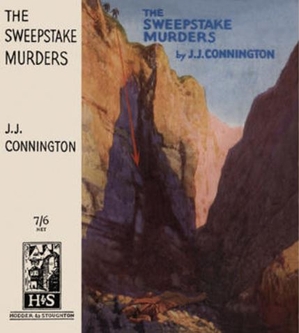
The Sweepstake Murders is a 1931 detective novel by the British author Alfred Walter Stewart, published under his pseudonym J.J. Connington. It is the seventh in his series of novels featuring the Golden Age Detective Chief Constable Sir Clinton Driffield. It uses a tontine murder theme, which recurs in detective and mystery stories.
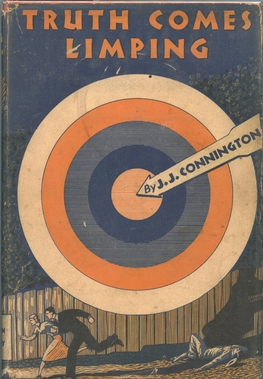
Truth Comes Limping is a 1938 mystery detective novel by the British author Alfred Walter Stewart, published under his pseudonym J.J. Connington. It is the twelfth in a series of seventeen novels featuring the Golden Age Detective Sir Clinton Driffield, the Chief Constable of a rural English county. It was published by Hodder and Stoughton in London and Little, Brown and Company in the United States.
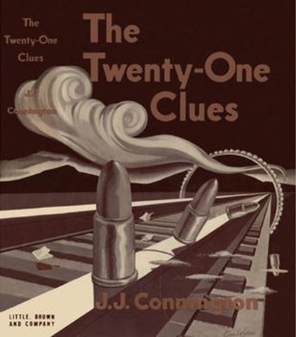
The Twenty-One Clues is a 1941 detective novel by the British author Alfred Walter Stewart, published under his pseudonym J.J. Connington. It is the fourteenth in a series of seventeen novels featuring the Golden Age Detective Sir Clinton Driffield, the Chief Constable of a rural English county. It was published by Hodder and Stoughton in London and Little, Brown and Company in the United States.

Murder in the Maze is a 1927 detective novel by the British author Alfred Walter Stewart, published under his pseudonym J.J. Connington. It was the first of seventeen novels featuring his best-known character the Golden Age Detective Sir Clinton Driffield, Chief Constable of an English county. It takes the form of a classic country house mystery. First published in Britain by Ernest Benn, it was released in the United States by Little, Brown and Company.

The Detective Wore Silk Drawers is a 1971 historical detective novel by the British author Peter Lovesey. It was the second entry a series of eight novels featuring the Victorian era policeman Sergeant Daniel Cribb, a member of the Metropolitan Police. It is set against the backdrop of nineteenth century bare-knuckle boxing. In 1980 it was adapted into an episode of the same title for the ITV series Cribb.




















